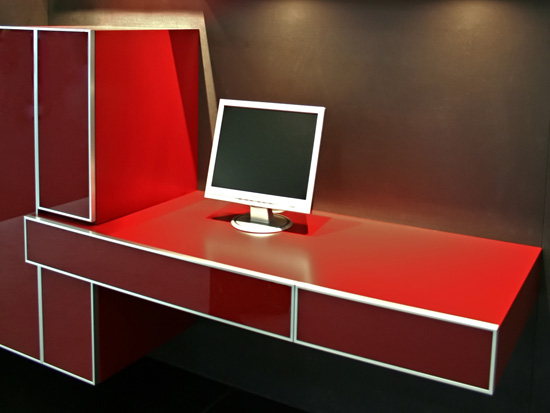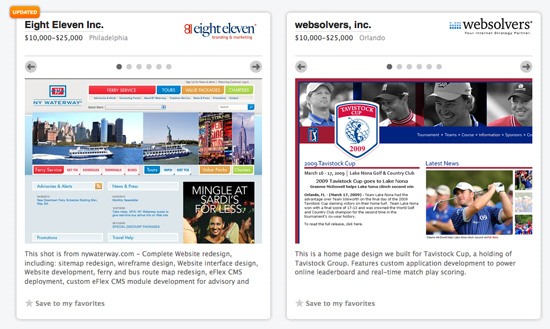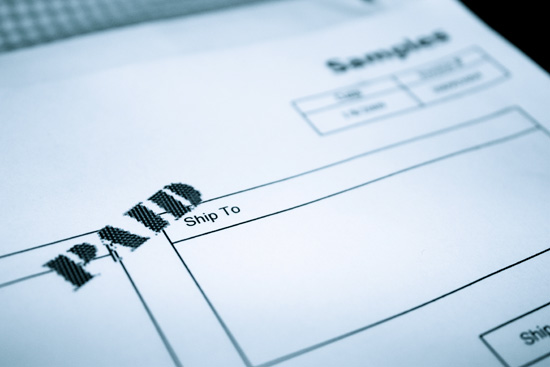- Home
- Blog
- Web Design A Beginner’s Guide to the Business Side of Freelancing
A Beginner’s Guide to the Business Side of Freelancing
-
 12 min. read
12 min. read
-
 William Craig
William Craig CEO & Co-Founder
CEO & Co-Founder
- President of WebFX. Bill has over 25 years of experience in the Internet marketing industry specializing in SEO, UX, information architecture, marketing automation and more. William’s background in scientific computing and education from Shippensburg and MIT provided the foundation for MarketingCloudFX and other key research and development projects at WebFX.
 Being a freelance designer entails more than just the act of designing. Master the business side of design and you’ll thrive. Neglect it and watch your business take a dive.
Being a freelance designer entails more than just the act of designing. Master the business side of design and you’ll thrive. Neglect it and watch your business take a dive.
There can be severe consequences for those who mismanage finances, fumble along without a business plan or don’t understand clients. Fortunately, this article will serve as a crash course for beginners who want to learn about the business side of freelance design. In this broad overview, we’ll take a look at creating a business plan, choosing a location to work, determining a going rate, understanding financial information, the importance of insurance, obtaining clients, showing your portfolio, writing proposals, keeping clients happy, writing contracts, understanding copyright laws and finally, taxes.
Buckle up!
Business Plan
 From the beginning, you should have a solid business plan in place. Some people spend more time planning what to eat for lunch than they do planning their business.
From the beginning, you should have a solid business plan in place. Some people spend more time planning what to eat for lunch than they do planning their business.
Running a successful business requires plenty of planning. The act of preparing a business plan will arm you with the knowledge you need to move forward efficiently and without any unexpected surprises. Key elements of a business plan usually include:
- executive summary
- a description of the business
- your market strategies
- a competitive analysis
- your development plan
- operations plan
- financial components of your business
If you just read that list and saw a few things you have never even thought about until now, you may be in for some trouble down the road. But it’s never too late to create a business plan. It takes time, but it’s well worth the effort.
A Google search will reveal a plethora of business plan templates to choose from, but a few of my favorite resources include:
- Bplans.com’s Graphic Design Sample Business Plan
- SCORE.org’s Templates for Your Business
- Entrepreneur.com’s Business Plan Samples, Writing a Business Plan section
Location to Work
 Next on the list of things to do is choosing a location to work. Many freelancers work from home, but sometimes this can be confining (especially if you live in an apartment), but there are some alternatives. Shared working spaces, such as Hive at 55 in New York, are becoming increasingly popular because they provide business essentials such as WiFi, a fax machine, a printer, copier machines, as well as conference rooms and human interaction.
Next on the list of things to do is choosing a location to work. Many freelancers work from home, but sometimes this can be confining (especially if you live in an apartment), but there are some alternatives. Shared working spaces, such as Hive at 55 in New York, are becoming increasingly popular because they provide business essentials such as WiFi, a fax machine, a printer, copier machines, as well as conference rooms and human interaction.
Of course, if you have the dough, you can always rent some office space, but that might have to wait for a few years until your profits and client list have grown substantially (time to consult your business plan!). Still, other alternative workspaces include coffee shops, which can sometimes be loud and crowded, and even public parks.
Figuring Out How Much to Charge
One of the most important things you will need to do when starting a freelance design business is determining an appropriate going rate.
Some designers prefer to charge on an hourly basis, while others prefer a per-project fee. You’ll need to do what makes the most sense to you. Check out these resources to help you decide:
- Rates for Your Website Design Business: Hourly or Per Project?
- Trading the Hourly Rate for Task-Based Pay: Should You Do It?
- How Much to Charge for Design Work?
- How to Quote Per Project By Secretly Quoting Per Hour
In my experience, charging per project makes the most sense for large projects and for projects with a time requirement designers can accurately gauge, while an hourly fee works better for smaller projects and revisions.
Keeping Finances in Check
 Interpreting information about the financial health of your business is essential. There are three main equations that you need to familiarize yourself with.
Interpreting information about the financial health of your business is essential. There are three main equations that you need to familiarize yourself with.
1. Balance Sheet
The first is called a balance sheet. The balance sheet lists assets, liabilities and equity. Assets include cash, accounts receivable (invoices sent out that haven’t yet been paid), fixtures, buildings, land, equipment, security deposits and other intangible items such as patents, trademarks and copyrights.
Liabilities include accounts payable (money you have been invoiced for), lines of credit issued by banks and mortgages. Equity pertains to any monies invested in your business plus fiscal profits. By comparing the balance sheet at any two points in time, you will be able to determine how healthy your business is.
2. Profit and Loss Statement (P&L)
The second equation is the profit and loss statement, which is oftentimes referred to as the P&L. Your gross profit equals your revenue minus costs. Your net profit is your administrative or overhead expenses (like salaries, office supplies and health insurance) plus depreciation and amortization subtracted from your gross profits.
3. Cash Flow
The last — but not least — of the three equations you need to know and understand is the cash flow statement, which determines your liquidity. Understanding cash flow is simple. If your accounts receivable increases over a given period of time, you are basically providing credit to those clients and will have less cash on hand.
On the other hand, if your accounts payable have grown, you may have more cash on hand but will end up owing more money.
Insuring Your Business
 Having insurance is the ultimate form of planning ahead and you need it because — let’s face it — things rarely go exactly as planned. If you or your business runs into an unexpected situation (say your equipment is stolen or you find out you need to have a $150,000 surgery), your insurance agency will be there to help.
Having insurance is the ultimate form of planning ahead and you need it because — let’s face it — things rarely go exactly as planned. If you or your business runs into an unexpected situation (say your equipment is stolen or you find out you need to have a $150,000 surgery), your insurance agency will be there to help.
In some cases, freelancers working at home may feel that their renter’s insurance is enough to cover any losses from a catastrophe such as a fire or flood. Legal defense can also be quite expensive and is yet another reason why it pays to have insurance.
Finding Clients
You wouldn’t have a design business at all if you weren’t able to bring in clients.
Did you know that the best freelance designers are actually great salespeople? You may hate sales, but it’s a fact of life for freelance businesses. Having said that, there are a number of places to find clients for your fledgling business.
Of course, you’ll want to have a great website or hosted portfolio (on places such as Behance), but there are also some “old school” techniques that still work nicely when it comes to snagging clients. One such technique is to contact every ad agency or design studio in your local area because, as a freelancer, you are perfectly positioned to handle overflow from their business. Another possible source of clients are local publishers such as newspapers or book houses.
Print shops often receive design work in which they don’t specialize in and so are happy to have a local freelance contact whom they can contract for help. Leads can literally come from anywhere: grocery shopping, family, local business organizations or the phone book. Keep your eyes open and have a business card handy wherever you go.
Also, once you’ve completed a project, it doesn’t hurt to ask for referrals and a testimonial.
Presentation Matters
 Solid presentation skills will help you win new accounts. Clients typically look for five essential items when evaluating your services.
Solid presentation skills will help you win new accounts. Clients typically look for five essential items when evaluating your services.
In order, they are:
- Methodology and professional skills
- Ability to deliver what the client wants
- Ability to graphically represent the client well
- Ability to provide a solution, not create additional problems
- Ability to meet deadlines
So, if you are showing off your portfolio in a meeting, make sure that your are targeting your presentation to that specific audience. Whether it’s the nature of the work, the illustration or photography style or a specific market, make sure to keep it as focused as possible. When it comes to your portfolio, it’s best to narrow it down to your top 10-20 pieces and to keep it as current as possible.
The same goes for your online portfolio. The fact that you have unlimited storage space on your website doesn’t mean that you should put up everything you’ve ever designed.
Writing Requests for Proposals (RFPs/RFQs)
As your business grows, you’ll inevitably get approached to write up a proposal or submit a bid for a large project.
This is referred to as a request for proposal (RFP) or request for quotation (RFQ). Whether or not you should participate in a bidding war is another question. I’d say if you are a small 1-2 person team, bidding against larger companies may not be the best idea.
It’s time-consuming and can detract from your regular billable time. If you have the time and patience though, winning a bid can be like landing a whale — you can live off of the blubber for quite a long time.
Keeping Clients Happy
 Once you’ve built up a client base, you’ll need to work on keeping them happy.
Once you’ve built up a client base, you’ll need to work on keeping them happy.
Many freelancers derive more than half of their annual income from repeat business. The best way to make your clients happy is to sacrificially meet all of their needs and expectations. After all, nobody said freelancing was easy.
Don’t overlook the importance of what you say. Remember, a big mouth can land you in big trouble, so don’t oversell yourself. Does this mean you have to wine and dine local clients?
Well, perhaps. Not all freelancers like having meetings — that could be one of the leading reasons why they left the rat race in the first place — but sometimes meetings are required to cement the deal. My best advice?
Learn to go with the flow. Most of all, always, always be honest with your clients. If there is a problem, you should let them know. Good communication will prevent problems in the future.
Contracts
A contract is a legally binding document that spells out the parameters of a business relationship. Things like deliverables, number of revisions, time frame and payment are all covered in a good contract. Why use a contract?
For protection, of course. If something goes wrong on the project, you will be able to point out in the contract exactly what you are accountable for. Contracts are also great for preventing scope creep (when a client wants to expand the project for the same amount of money).
You’ll also want to spell out who owns the rights to what you design — you or the client? For more on design contracts, check out these resources:
- Using Freelance Graphic Design Contracts
- What to Include in Your Design Contracts
Dealing with Payments
 Part of running your own business is dealing with the collection of payments. In order to avoid potential hassles, a good rule of thumb is to get everything in writing including proposals, estimates, letters of agreement, contracts and schedules. Make sure you have a payment schedule in place and make sure your clients understand when you expect to get paid.
Part of running your own business is dealing with the collection of payments. In order to avoid potential hassles, a good rule of thumb is to get everything in writing including proposals, estimates, letters of agreement, contracts and schedules. Make sure you have a payment schedule in place and make sure your clients understand when you expect to get paid.
It could be once a month, up-front, upon completion or at a different set interval. Before you do a single ounce of design work, I would always recommend getting a deposit. The industry standard is to collect 50% of the quoted amount unless the project is large.
To manage invoicing, I’d recommend using an online tool such as Freshbooks. It’s convenient for both you and your clients and makes keeping records a cinch.
Copyright Laws
Understanding copyright laws can be a bit tricky.
Let’s start with what is copyrightable. If you are the author of an original work in any tangible medium (such as literature, music, drama, graphics etc.) you can copyright that work. In fact, as soon as you create it, it’s copyrighted.
What can’t you copyright? Here are a few things that can’t be copyrighted:
- US government property
- ideas
- methods
- procedures
- concepts
- slogans
- discoveries
If you own a copyright, you have the exclusive right to authorize reproductions, distribute copies to the public and prepare derivative works. If anyone else wants to use these rights, they must first obtain your consent. If someone decides to rip you off by creating something similar, it may be hard to prove that you were the original creator, so it’s a good idea to fill out the copyright assignment form and record this with your respective Copyright Office.
Taxes
What are the two sure things in life? Everybody together now! Death and taxes. I can’t offer much advice about death, but when it comes to taxes, you had better be prepared.
Keep records of everything including income and expenses. One thing you won’t mind keeping track of is write-offs. If you work from home, you can deduct the square feet used as on office.
If you’ve already graduated from college and decide to head back for more, you could deduct those expenses. Professional equipment, travel and transportation can all be deductible so make sure to keep track of your mileage and receipts! You’ll absolutely want to hire an experienced tax professional to help you sort through everything when the time comes.
Also, if you plan on participating in the social security system, then you must pay the self-employment tax.
Got Something to Say About the Business Side of Freelancing?
If you have thoughts, additional tips, suggestions, and experiences to share, please do contribute in the comments below.
Related Content
- How to Find Awesome Clients
- How to Make Remote Team Collaboration Work
- Why Branding Yourself is Important
-
 President of WebFX. Bill has over 25 years of experience in the Internet marketing industry specializing in SEO, UX, information architecture, marketing automation and more. William’s background in scientific computing and education from Shippensburg and MIT provided the foundation for MarketingCloudFX and other key research and development projects at WebFX.
President of WebFX. Bill has over 25 years of experience in the Internet marketing industry specializing in SEO, UX, information architecture, marketing automation and more. William’s background in scientific computing and education from Shippensburg and MIT provided the foundation for MarketingCloudFX and other key research and development projects at WebFX. -

WebFX is a full-service marketing agency with 1,100+ client reviews and a 4.9-star rating on Clutch! Find out how our expert team and revenue-accelerating tech can drive results for you! Learn more
Make estimating web design costs easy
Website design costs can be tricky to nail down. Get an instant estimate for a custom web design with our free website design cost calculator!
Try Our Free Web Design Cost Calculator


Web Design Calculator
Use our free tool to get a free, instant quote in under 60 seconds.
View Web Design CalculatorMake estimating web design costs easy
Website design costs can be tricky to nail down. Get an instant estimate for a custom web design with our free website design cost calculator!
Try Our Free Web Design Cost Calculator




